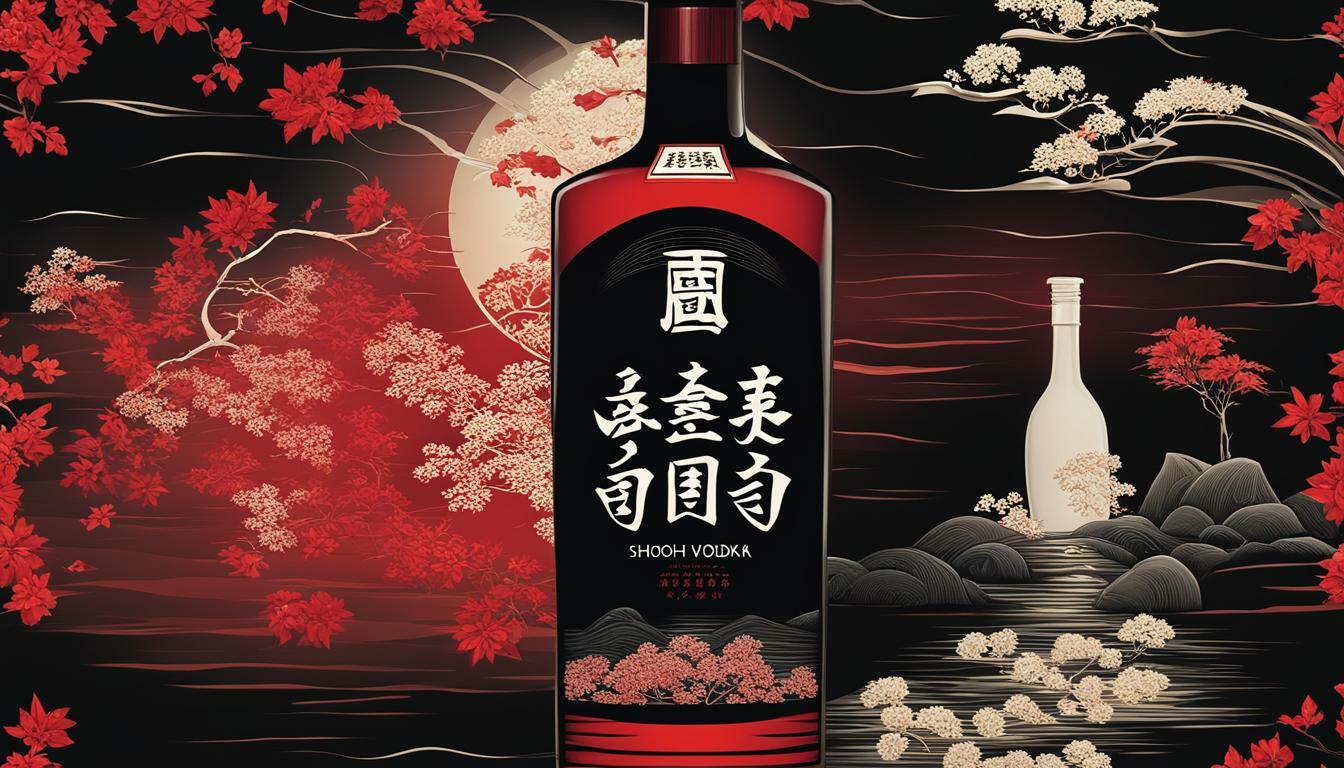Unveiling the Mystery: Is Shochu a Vodka?
Shochu and vodka are two popular spirits with distinct backgrounds and production methods. While vodka is often associated with Russia and Eastern European countries, shochu is deeply rooted in Japanese culture. But what sets them apart? And can shochu truly be considered a type of vodka?
In this episode of the Japan Distilled podcast, we dive into the intriguing world of shochu and vodka. Join us as we explore the origins, production processes, and characteristics of these fascinating alcoholic beverages. From the traditional methods of shochu production in Japan to the unique regional styles like Satsuma shochu, Iki shochu, and Kuma shochu, we uncover the secrets behind this beloved drink.
- Shochu and vodka have different origins and production processes
- Shochu is deeply ingrained in Japanese culture, while vodka is associated with Russia and Eastern European countries
- Regional styles of shochu, such as Satsuma shochu, Iki shochu, and Kuma shochu, contribute to the diversity of the spirit
- Koji (aspergillus oryzae) plays a vital role in both Japanese culinary tradition and shochu production
- Liquor laws in the United States can impact the perception and availability of shochu
Intrigued by the connection between shochu and vodka? Stay tuned as we uncover more fascinating insights in the following sections.
Exploring the Origins and Production Processes
Shochu has its roots in Japan and is made using a unique distillation process. Unlike vodka, which can be made from various grains or potatoes, shochu is typically crafted from rice, barley, sweet potatoes, or buckwheat. This variation in raw materials contributes to the diverse flavors and characteristics found in different types of shochu.
The production process of shochu involves fermentation and distillation. To begin, the raw ingredients are mashed and combined with water to create a mash. This mash is then fermented with the help of koji, a type of mold that breaks down starches into fermentable sugars. The fermented mash is then distilled, typically in a pot still or column still, resulting in a clear liquid with a higher alcohol content.
However, it is important to note that not all shochu is distilled in the same way. There are two main types of shochu production methods: single distilled (korui) and multiple distilled (honkaku). Single distilled shochu is known for its robust and rich flavors, while multiple distilled shochu has a smoother and cleaner taste. The choice of distillation method greatly influences the final product.
To give you a visual representation, here is a simplified table comparing the production processes of shochu and vodka:
| Shochu | Vodka |
|---|---|
| Made from rice, barley, sweet potatoes, or buckwheat | Can be made from various grains or potatoes |
| Fermented with koji mold | Fermented with yeast |
| Distilled using pot still or column still | Distilled multiple times through column still |
| Diverse flavors and characteristics | Relatively neutral flavor |
| Single distilled (korui) or multiple distilled (honkaku) | Multiple distilled |
As you can see, while shochu and vodka may have similarities in the distillation process, the choice of ingredients, fermentation methods, and distillation techniques set them apart. Shochu offers a wide range of flavors and regional styles, making it a beloved alcoholic beverage in Japan and beyond.
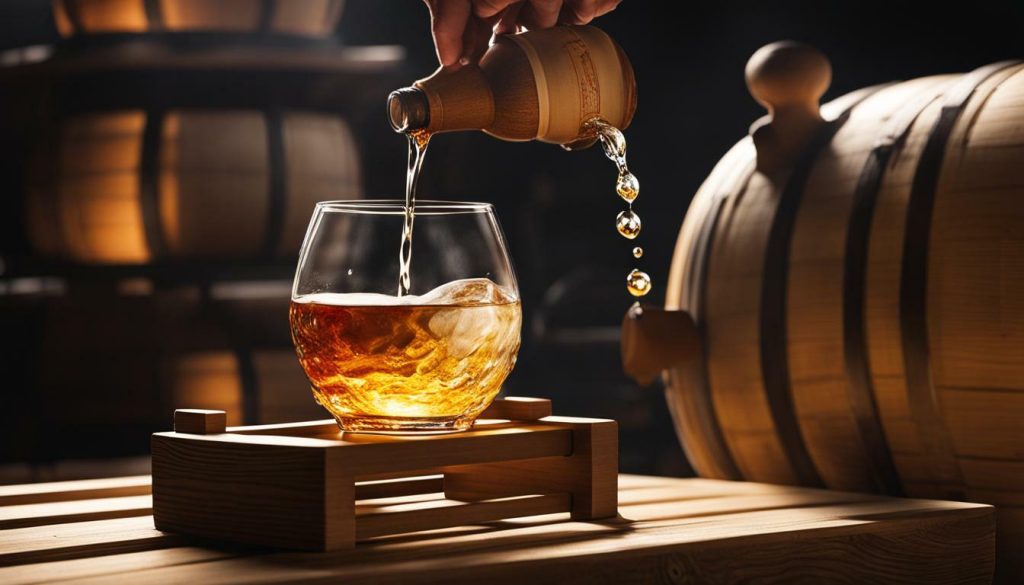
Shochu and vodka each have distinct flavors and characteristics that appeal to different palates. Shochu, a traditional Japanese spirit, is known for its smooth and delicate taste. It is typically made from ingredients such as rice, barley, sweet potatoes, or buckwheat, which contribute to its unique flavor profile. This versatile alcoholic beverage can be enjoyed neat, on the rocks, or mixed into cocktails, making it a popular choice among cocktail enthusiasts.
Vodka, on the other hand, is known for its neutral taste and versatility. It is usually made from grains or potatoes and undergoes a rigorous distillation process, resulting in a clean and crisp flavor. Vodka’s neutrality allows it to be easily mixed into a wide range of cocktails, making it a staple in many bars and households. Whether you prefer a strong and bold spirit like vodka or a more subtle and nuanced drink like shochu, both offer their own distinct appeal.
To better understand the characteristics of shochu and vodka, let’s take a look at a comparison table:
| Characteristic | Shochu | Vodka |
|---|---|---|
| Flavor Profile | Smooth, delicate, and varied based on the ingredient used | Neutral, clean, and crisp |
| Alcohol Content | Typically ranges from 25% to 45% | Typically ranges from 35% to 50% |
| Serving Styles | Neat, on the rocks, or mixed into cocktails | Neat, on the rocks, or mixed into cocktails |
| Production Process | Various traditional methods such as pot still or continuous still distillation | Column distillation method |
As you can see, shochu and vodka are similar in terms of serving styles but differ in flavor profile, alcohol content, and production process. While shochu offers a more nuanced taste with its diverse range of ingredients, vodka provides a clean and versatile base for mixed drinks. Whether you lean towards Japanese tradition or prefer a classic favorite, both shochu and vodka have their own unique charm that can satisfy a variety of tastes.
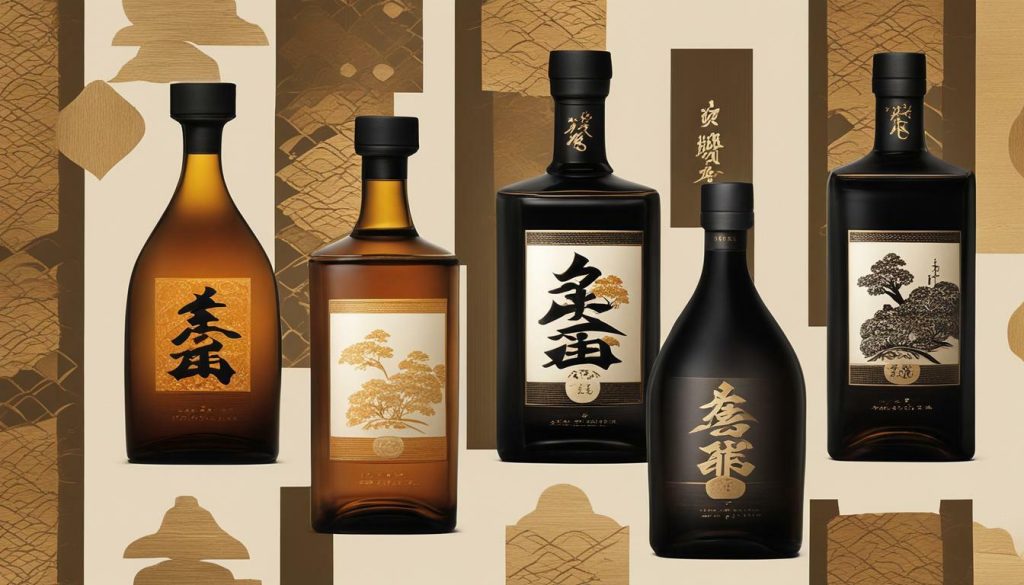
Shochu is produced in various regions of Japan, each with its own unique style and characteristics. Let’s take a journey through some of the most notable regional styles of this beloved alcoholic beverage.
Satsuma Shochu
Satsuma shochu is a prominent style that originates from Kagoshima Prefecture in southern Japan. Made primarily from sweet potatoes, this type of shochu boasts a rich and earthy flavor profile. It is often enjoyed straight or on the rocks, allowing the complex flavors to shine.
Iki Shochu
Hailing from the island of Iki in Nagasaki Prefecture, Iki shochu is known for its smooth and delicate character. It is typically crafted from barley, giving it a light and refreshing taste. Iki shochu is frequently enjoyed with meals and is considered a perfect accompaniment to seafood.
Kuma Shochu
Kuma shochu originates from Kumamoto Prefecture in southern Japan and is made using rice as its main ingredient. It is often described as having a clean and crisp flavor, with a hint of sweetness. Kuma shochu is versatile and can be enjoyed neat, mixed in cocktails, or used in culinary recipes.
| Regional Style | Main Ingredient | Flavor Profile | Recommended Serving |
|---|---|---|---|
| Satsuma Shochu | Sweet Potatoes | Rich and Earthy | Straight or on the rocks |
| Iki Shochu | Barley | Smooth and Delicate | With meals, especially seafood |
| Kuma Shochu | Rice | Clean and Crisp | Neat, in cocktails, or in culinary recipes |
These are just a few examples of the diverse regional styles of shochu found in Japan. Each style has its own unique production methods and characteristics, offering a wide range of flavors and experiences for shochu enthusiasts around the world.
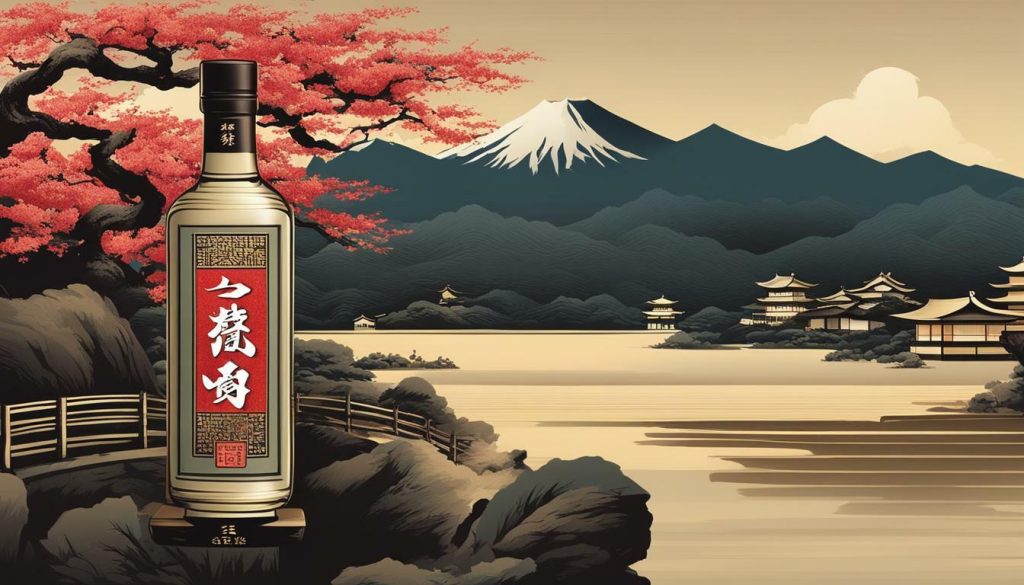
The Importance of Koji and Yeast in Shochu Production
Koji and yeast play crucial roles in the production and flavor development of shochu. Koji, also known as aspergillus oryzae, is a type of mold that is used in various aspects of Japanese cuisine, including the fermentation of shochu. It is responsible for breaking down the starches in the raw ingredients, such as rice, barley, or sweet potatoes, into fermentable sugars.
This step is crucial because it allows the yeast to convert these sugars into alcohol during the fermentation process. The use of koji in shochu production not only provides a unique flavor profile but also contributes to the richness and complexity of the final spirit. Different types of koji can be used, depending on the desired characteristics of the shochu, resulting in a wide range of flavors and aromas.
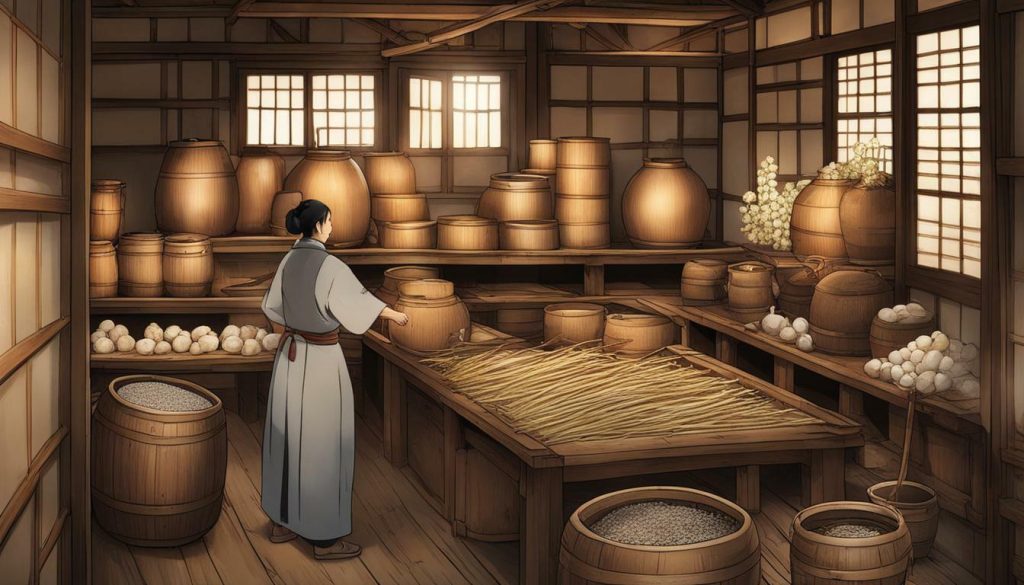
Shochu Production Process:
| Step | Description |
|---|---|
| Steaming | The raw ingredients, such as rice or sweet potatoes, are steamed to soften them. |
| Koji Cultivation | The steamed ingredients are mixed with koji spores and left to ferment. |
| Fermentation | The koji-infused ingredients are combined with water and yeast and left to ferment for several days. |
| Distillation | The fermented liquid is distilled to separate the alcohol from other impurities. |
| Aging | Some shochu varieties may undergo aging in wooden barrels to develop further complexity. |
In addition to koji, yeast also plays a significant role in shochu production. Different strains of yeast can be used to ferment the liquid, each contributing its own unique flavors and characteristics. The yeast consumes the sugars produced by koji during fermentation and produces alcohol as a byproduct. The choice of yeast can greatly impact the final taste and aroma of the shochu.
Understanding the importance of koji and yeast in shochu production allows us to appreciate the craftsmanship and artistry behind this traditional Japanese spirit. The careful selection and combination of these ingredients contribute to the diverse range of flavors and styles found in the world of shochu.
Liquor Laws and Conclusion
The United States’ liquor laws pose unique challenges for the classification and consumption of shochu, but they do not diminish its distinct qualities. Shochu, often referred to as Japanese vodka, is an intriguing and versatile alcoholic beverage with a rich history and cultural significance in Japan. However, due to the complexities of liquor regulations, shochu faces a hurdle in the American market.
Shochu is often mistaken for vodka due to its clear appearance and high alcohol content. While both spirits share some similarities, such as being distilled beverages, they differ in production methods and flavor profiles. Shochu is traditionally made in Japan using various ingredients such as sweet potatoes, barley, or rice, and undergoes a unique fermentation process. Vodka, on the other hand, is typically made from grains like wheat or rye and goes through a different distillation process.
One of the main challenges with shochu classification in the United States is the lack of a distinct category for this unique spirit. The Alcohol and Tobacco Tax and Trade Bureau (TTB) classifies shochu as a “distilled spirits specialty,” which can cause confusion among consumers who may be unfamiliar with this classification. As a result, shochu can be found in liquor stores alongside other spirits, but its presence may not be as prominent as more mainstream options.
Despite these challenges, shochu continues to gain recognition and popularity among those who appreciate its nuanced flavors and cultural significance. The geographical indications and regional styles of shochu, such as Satsuma shochu, Iki shochu, and Kuma shochu, contribute to its diversity and appeal. The use of koji (aspergillus oryzae) in the production of shochu also adds a distinctive element, further distinguishing it from other spirits.
In conclusion, while shochu may not fit neatly into the vodka category, it possesses its own unique characteristics that make it a fascinating and worthwhile spirit to explore. Despite the challenges posed by liquor laws, shochu’s distinct qualities continue to captivate the palates of those who seek new and exciting drinking experiences. So, the next time you come across shochu, give it a try and discover the intriguing flavors and cultural heritage that this Japanese spirit has to offer.
FAQ
Is shochu a type of vodka?
No, shochu is not considered a vodka. While both shochu and vodka are alcoholic beverages, they have distinct production methods, origins, and flavor profiles.
How is shochu made?
Shochu is traditionally made in Japan using various ingredients such as rice, barley, sweet potato, or buckwheat. It undergoes a fermentation and distillation process to create a unique spirit.
What are the characteristics of shochu and vodka?
Shochu typically has a lower alcohol content than vodka and offers a range of flavors depending on the base ingredient used. Vodka, on the other hand, is known for its neutral taste and higher alcohol content.
What are some regional styles of shochu?
Shochu has unique regional styles such as Satsuma shochu, Iki shochu, and Kuma shochu. These styles are influenced by the local ingredients, production techniques, and cultural traditions of their respective regions.
What is the role of koji and yeast in shochu production?
Koji, made from aspergillus oryzae, is used in the fermentation process of shochu to convert starches into sugars. Yeast is responsible for converting sugars into alcohol during the fermentation process.
How do liquor laws in the United States affect shochu?
Liquor laws in the United States can impact the perception and availability of shochu. These laws vary state by state and can restrict importation, distribution, and sales of certain alcoholic beverages like shochu.
